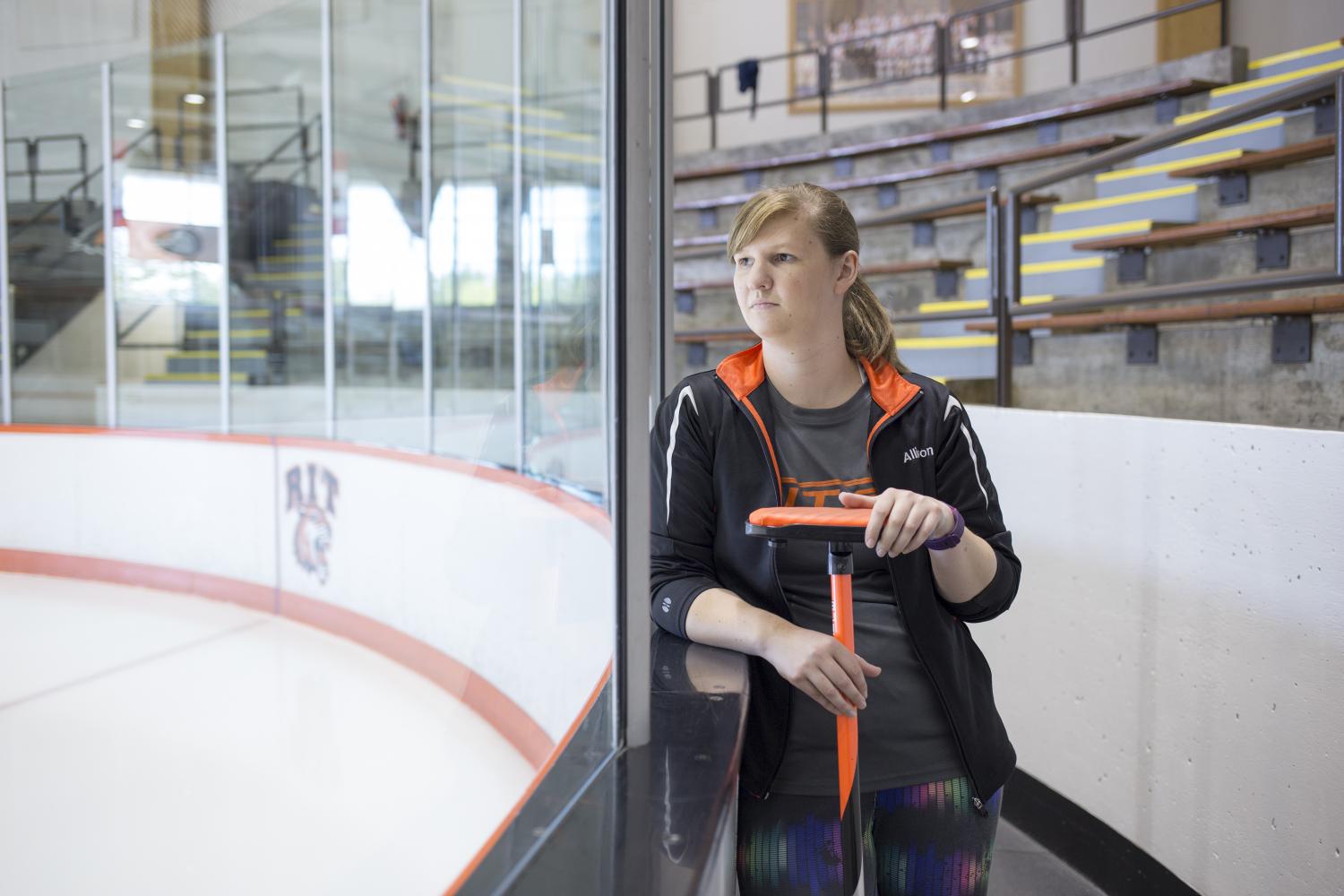Soccer, basketball, volleyball, football: these are the activities most of us were shepherded to in our youth.
Molly Hill: Fencing
Like many students at RIT, fourth year Film and Animation and Motion Picture Science double major Molly Hill has an undying love for all things science fiction. In fact, it was her fondness for adventure stories that led her to discover a new pursuit: fencing.
“Ten years ago, I was reading 'The Spiderwick Chronicles,' and Mallory, one of the characters, was a fencer,” she recalled. “I didn’t know anything about fencing, but it sounded so cool. So I found a club online, gave it a try and loved it.”
Fencing consists of two people going head-to-head on a 2-by-14-meter strip, trying to gain touches off each other with rapier swords. It provided a fascinating activity for Hill; not only did it offer her an athletic outlet, but a mental one as well.
“Fencing is often referred to as physical chess,” she explained. “Sometimes, it’s just like a big game of chicken.”
“Fencing is often referred to as physical chess.”
After a decade of being invested in the sport, Hill has come to love the many different facets that make up fencing, especially “the community and the emphasis on sportsmanship.” Luckily for Hill, she has been able to find that community spirit very much alive in RIT’s Fencing Club.
“Those people are my family,” she said passionately. As president of the club, Hill has worked hard to organize competitive opportunities for her group and is looking forward to hosting some tournaments here on campus during the 2016-2017 school year.
Emily Kimber: Equestrian Polo
Fourth year Biomedical Engineering major Emily Kimber first began riding horses as a bonding activity with her grandfather.
“Every Wednesday, from kindergarten to eighth grade, he would pick me up from school, hand me a Reese’s Peanut Butter Cup, and drive me to the stables,” she said. It was not until one sunny summer afternoon while she watching a polo match with her family that she even considered the sport.
“My mom turned to me and said, ‘You could do that, you ride horses,
Polo is a four-person team sport that is often described as field hockey on horseback. In order to become a talented player, Kimber not only had to use her prior equestrian knowledge, but also needed to pick up some new skills.
“You really have to work well with the horses,” she explained. “You’re asking them to do something that they typically wouldn’t do, such as galloping at a wall at full speed. So you have to be confident. You have this language barrier, and you need to find a way to communicate with your horse.”
"You have this language barrier, and you need to find a way to communicate with your horse."
Not only has Kimber enjoyed the opportunity to further her horseback riding talents with polo, but she has also fallen in love with its community. Much like Hill discovered with fencing, polo places a huge emphasis on sportsmanship.
“After every match, we have food or a cook-out with the opposing team,” Kimber said. “Doesn’t matter if we win or lose — there is always a real sense of camaraderie.”
Flannery Allison: Curling
At first, curling was nothing more than an inside gag between fifth year Photojournalism major Flannery Allison and her father.
“At every single college we visited, my father would jokingly ask ‘Is there a curling club here?’” she recalled. “RIT was one of the few places that did. So once I got here I signed up, and now I am more hooked than he is.”
Curling, a four-person team sport that Allison described as “shuffleboard on ice,” involves players aiming stones for the button — the center of a target — at the end of a long lane of ice. The goal is to have more stones closer to the button than the opposing team.
In her five years as part of RIT’s Curling Club, Allison has not only witnessed a change in her own skills, but also in the dynamics of the team.
“It's been a big transition period for the curling club,” she said. “When I started, there was only eight members. Since then we’ve grown to 37 members. It’s more of a community than it used to be.”
“It's been a big transition period for the curling club. When I started, there was only eight members. Since then we’ve grown to 37 members. It’s more of a community than it used to be.”
And just like Hill and Kimber, Allison finds the community aspect of her sport to be one of its most admirable qualities.
“Curling actually began as a drinking game,” she explained. “So after every game, you go and sit with the teams you played, and whatever team wins buys beers for the losing team, and you talk about the game and other things.”
These athletes emphasize the powerful connection between sports and community. At their very core, athletes possess the ability to forge relationships and take pride in their skills. Sometimes that pride can exhibit itself in antagonistic and ugly ways, but when Hill, Kimber and Allison discuss the family and home they have found in their teammates as well as their opponents, it is clear that friendly rivalries are not actually oxymoronic. Sometimes, a shared love for the game is more than enough to build mutual respect and camaraderie.








